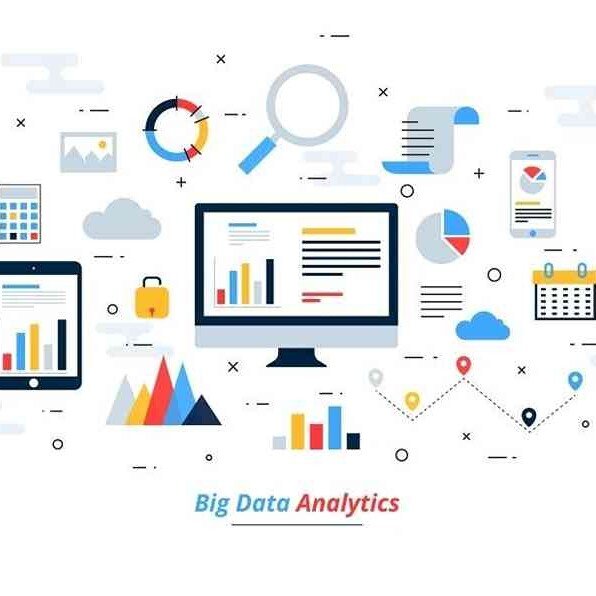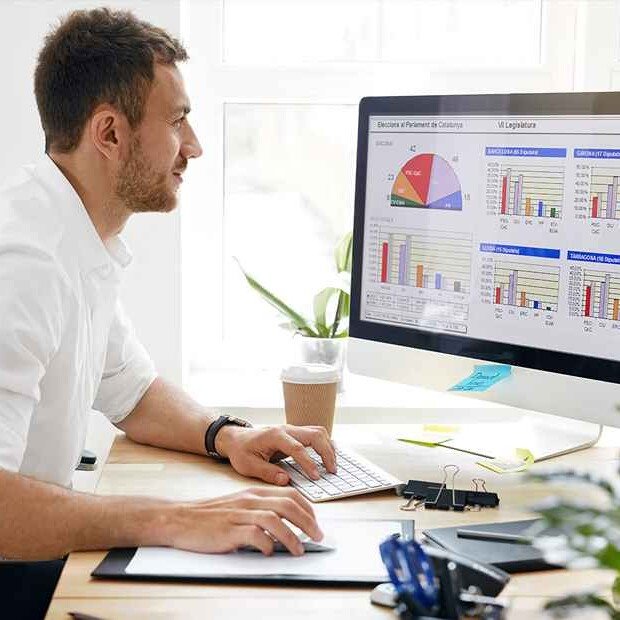1. Improved health outcomes
Health facilities collect health data from patients for several reasons, but ultimately to improve their health outcomes—to treat them safely and effectively.
This data is analyzed to gain a clearer understanding of the healthcare environment and implement enhancements to healthcare processes.
Health data analytics tools help achieve better health outcomes in many ways, including supporting physician decision-making, removing human bias in patient assessment, identifying key performance measures for the best outcomes, etc.
2. Utilizing Patient-reported outcome measures (PROMs)
While physicians measure health outcomes based on sustained clinical improvement, avoidable readmissions, avoidance of hospital-acquired infections, etc., patients do the same factoring in how they feel about their overall health, how well they can complete common activities, their energy level, how much pain they’re experiencing, etc.
This patient’s report of their well-being is referred to as a patient-reported outcome measure.
These outcome measures, howbeit influenced by social and demographic factors, are being collated by health institutions, analyzed, and used to design treatment plans for better patient outcomes.
3. Patient management
There are several challenges in managing patients in health facilities: patient triage, waiting time, hospital bed allocation, etc.
Analytics tools are used to predict and plan for patient inflow to these facilities, reducing waiting time and improving the management of clinic patients, those on observation, and others on admission.
These tools appropriately allocate healthcare resources as needed at times. Ultimately, they help improve patient outcomes.
4. Prevention of re-admissions
Following patients’ management on admission, they get discharged fairly stable to recuperate at home away from the hazards in health facilities like nosocomial infections.
Oftentimes, some only get worse and require re-admission instead of sustaining their improvement.
This unexpected turn of events is a major problem in healthcare worldwide, as it costs the industry billions to manage.
Here, analytics plays a pivotal role in assigning risk scores to patients.
This score, which can be a number, tells health institutions how much a patient’s risk for readmission is.
This would inform tailored care as riskier patients would receive personalized intervention aimed at minimizing the risk of re-admission and improving their care on the first visit.
5. Telehealth and remote care
Patient data from telemedicine consultations, remote monitoring devices, wearables, etc., usually linked to electronic health records can be analyzed in real-time to alert health professionals to any danger a patient might encounter when away from the hospital.
Analytics models can diagnose irregular heart rhythms from smart devices worn by patients and alert emergency services for immediate care.
6. Identifying risks of chronic diseases
These diseases, including hypertension and diabetes, have risk factors that predispose people to develop them.
Health data analytics help improve the accuracy and speed of identifying these individuals at risk of developing these diseases by processing details of their health records.
They can then be counseled into adopting lifestyle changes to delay or prevent disease onset.
For patients who already have the disease, analytics helps in identifying who has them under control and those who do not.
7. Learning health system (LHS)
The current approach to healthcare in most parts of the world is therapeutic or curative.
The current trend is a move to a learning health system (LHS), where every interaction in healthcare can generate data for knowledge.
This implies a system where the principles of healthcare, technological innovation, and research are all integrated.
Health data can be collected during patient-physician interactions and used for clinical support and research.
8. Improved healthcare business operations
The organizational structures of healthcare providers and their work processes directly determine the efficiency of the organization and the quality of care they offer their patients.
To measure the effectiveness of these structures and work processes, related healthcare provider data are analyzed to derive the needed insight towards understanding and improving work processes, e.g., the detection of problems with interoperability and data sharing.
9. Improved staffing efficiency
Health business management takes advantage of analytics tools to identify staffing issues and recruit, hire, train, and retain healthcare professionals.
A data-driven approach to labor management helps health organizations balance the need to contain labor costs and improve efficiency and patient outcomes.
Analytics tools help managers cut time spent on schedule, as they provide insight into the productivity of workers and teams and the cost-effectiveness of staffing decisions.
Also, hospital staff make use of these analytic solutions to manage their schedules and other employment-related resources.
All of these help health facilities adjust staffing ratios in a way that reduces their labor costs without affecting the quality of care provided or patient outcomes.
10. Reductions in healthcare running costs
Health care is expensive worldwide.
Data analytics help to compare running costs and work processes to determine those that cost less while offering the same or better value.
These optimal value processes are thereafter adopted by health facilities in place of those that cost more without added benefits.
This is called comparative effectiveness (CE) research and can be applied to treatment plans, public health policies, medications, medical devices, etc.
This aims to achieve a shift from fee-for-service payment models to value-based care.
Using predictive and prescriptive analytics, health organizations assess models that make healthcare efficient and lower operating costs by reducing appointment no-shows, managing supply chain costs, reducing financial errors, preventing equipment breakdowns, and decreasing fraud.
11. Data theft and cyberattack prevention
Data breaches are worrisome for all concerned parties—patients, health professionals, and healthcare facility administration alike.
Health data are especially a major target for hackers, as they either do not change or do so less often than data in other industries.
Also, the health industry is making a shift to digitalized health data, making it easier for hackers to get their hands on it.
Data analytics help avoid cyberattacks by monitoring and identifying fluctuations in network traffic or suspicious activities and promptly notifying network administrators.
Analytics also help identify security-threatening activities and system vulnerabilities in an organization’s data system, further prompting the data team to take security-conscious actions to remedy the vulnerabilities.
12. Drug research and development
Analytics is useful in research and development in the pharmaceutical industry for skyrocketing the development of drugs and increasing the success rate of drug trials with lower financial investment.
Research reveals that only 9.6% of drugs entering phase I clinical trials will reach the market, revealing that the other 90.4% lead to wasted time, effort, and resources.
Analysis algorithms are used to search vast amounts of research data to obtain insights from past research to inform the development of new drugs, determine whether or not they are effective, and speed up the process of clinical trials.
13. Improvement of medical research
Data analytics help researchers identify approaches to improve the efficiency of clinical processes, the accuracy of diagnosis and treatment, and provide new insight into the causes of disease.
This is achieved by applying analytics techniques to the processing of the vast amount of patient data from various health information systems, e.g., electronic health records, electronic medical records, personal health records, public health records, disease repositories, etc., and deriving insights from them.
14. A genetic approach to treatment
Genetic data offers several benefits, including identifying causes and risks for developing genetic diseases, providing insight into individual drug metabolism, elucidating gene function, estimating the prevalence of genes in populations, etc.
In routine healthcare, these genetic data are integrated with analytics tools and help health facilities and professionals offer personalized care to patients.
15. Disaster management and resource allocation
Disasters are situations whereby demand for resources exceeds available supply.
Disasters are part of our world, and they can take many forms.
They include natural disasters (hurricanes, snow storms, etc), infectious diseases, terrorist attacks, airplane crashes, etc.
Medical aid is one of the vital resources needed in disaster planning.
This is especially needed in disease outbreaks and pandemics.
Real-time data on the supply of resources helps in appropriate allocation to prevent loss of life.
Also, analytics allows patterns indicative of future outbreaks to be detected earlier, before an epidemic or pandemic emerges.
Obisesan Damola
Damola is a medical doctor who has worked in the Nigerian healthcare industry for a little over 3 years in a number of primary, secondary, and tertiary hospitals. He is interested in and writes about how technology is helping to shape the healthcare industry. He graduated from the College of Medicine, University of Ibadan, the foremost medical training institution in Nigeria.



